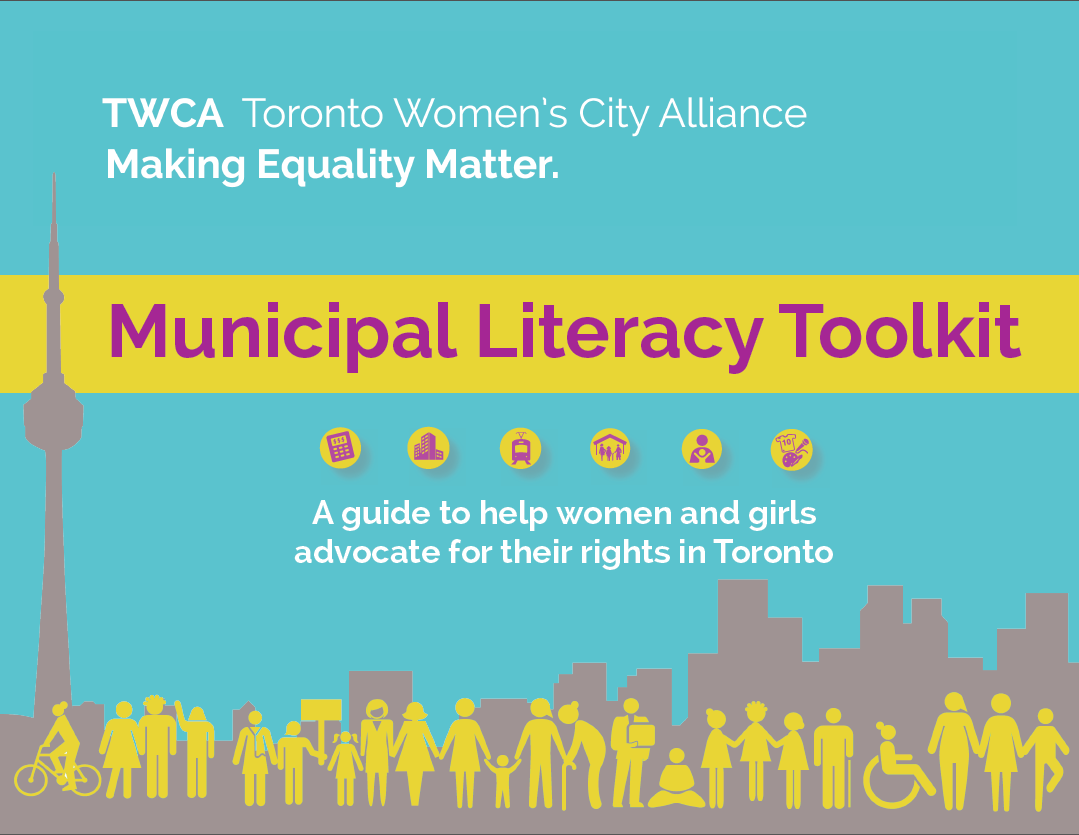Toronto Women’s City Alliance shares the concern with the City of Toronto to create strong and equitable neighbourhoods in which all residents can lead meaningful lives and reach their full potential. Investment in social infrastructure is crucial to the well-being of equity-seeking groups in our city, and we support this goal of the Strong Neighbourhoods Strategy.
However, there is a gendered silence in the equity indicators on which the strategy is based. The five key areas on which the indicators are based tend to have different impacts on women and men. The report defines an “inequity” as “an unnecessary, unfair and unjust difference.” It is no news to this Committee that women in Toronto face a number of unjust differences in social outcomes. What does this look like for the Strong Neighbourhoods Strategy? Here are some examples:
Economic Opportunities: Women earn on average 11% less than men, and the recent PEPSO survey indicates that more women are precariously employed (Poverty and Employment Precarity in Southern Ontario).
Social Development: The report notes that 26% of low income and 66% of racialized populations make up neighbourhoods below the benchmark. Racialized, low income women are more likely to head single households, and 38.4% of the children of single mothers live in poverty (Ontario Campaign 2000).
Healthy Lives and Participation in Decision-Making are both historically areas in which women have had little consideration or are excluded completely. Strong neighbourhoods require safe and affordable childcare, accessible recreation for youth and adult women, and affordable and accessible housing.
As the most likely primary caregivers, women have a huge stake in the provision of safe and appropriate housing for their families, and affordable transportation options to access health care providers.
Physical Surroundings: How clean and safe are our neighbourhood? Safety is one aspect of the physical and social landscape that touches women’s lives far more concretely. Women are more likely to walk their children to recreation, and walk to food stores. Fewer women than men in Toronto have a driver’s licence.
Women also experience domestic violence, and this should be included in any discussion of the safety and well-being of families and neighbourhoods.
More importantly, what are the implications for policy design? Given that 52% of the population of Toronto are women, a strategy to strengthen Toronto’s neighbourhoods must include a strategy to improve social outcomes for the city’s largest equity-seeking group.
We note that the report specifies a focus on the outcomes of inequities, such as unemployment. Yet, it is crucial for policy design, and moving forward, to consider how inequities become inequities because of the particularities of those who experience them, and the ways in which the inequities are experienced.
We urge the City to supplement its data with further research and gender disaggregated data for a more accurate picture of how the key indicators affect different groups, so that policies to make our neighbourhoods stronger can be effective and relevant.
The UN Habitat notes that “A city cannot become full economically productive, socially inclusive and environmentally sustainable, as long as there are barriers to gender equality and women’s empowerment. A city can become prosperous, equitable and sustainable only if women and men enjoy equal human rights and fundamental freedoms and are recognized as equal partners in urban development.”
Let us reverse “unnecessary, unfair and unjust differences” for all residents of these neighbourhoods, and all of Toronto.





